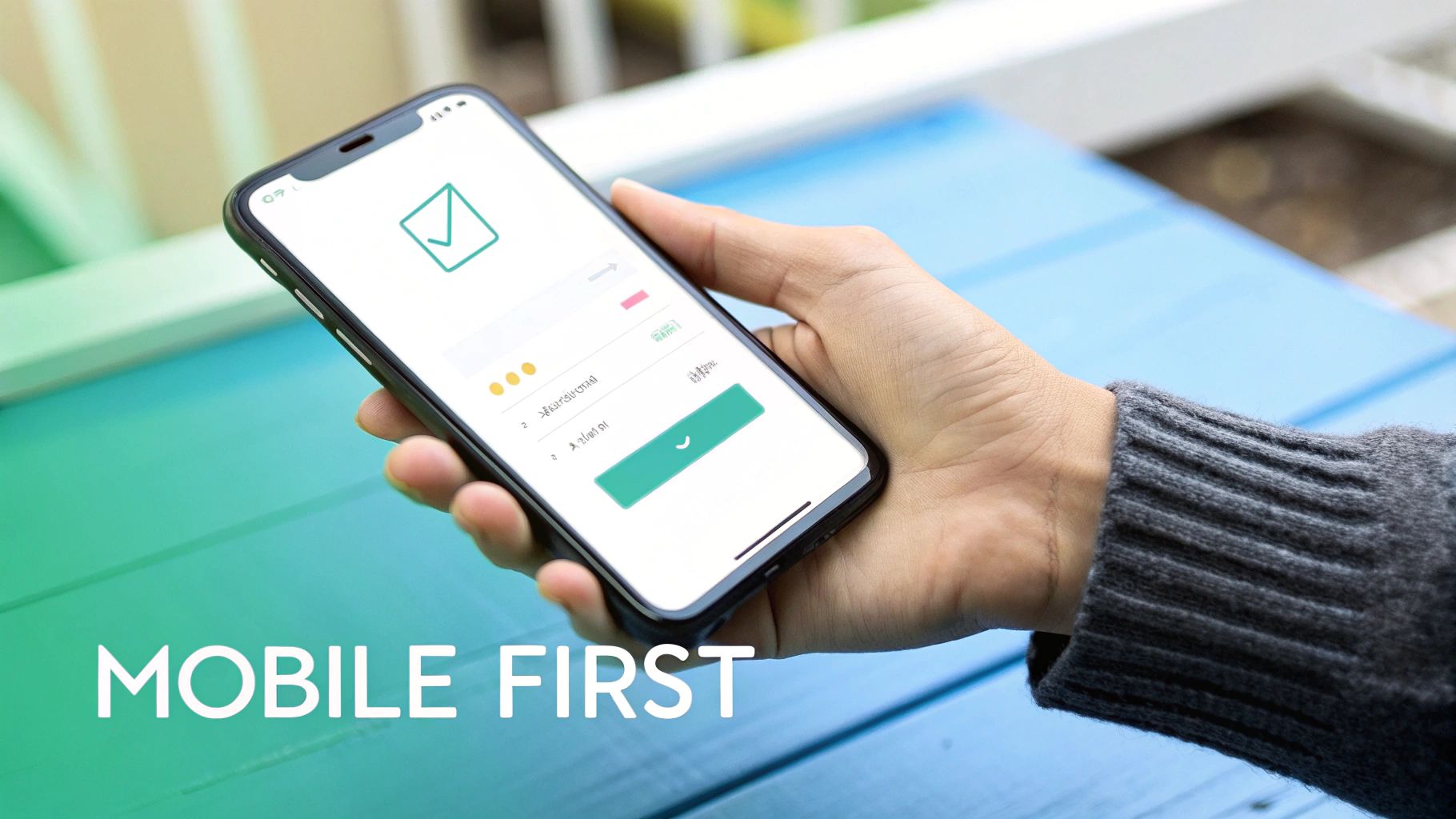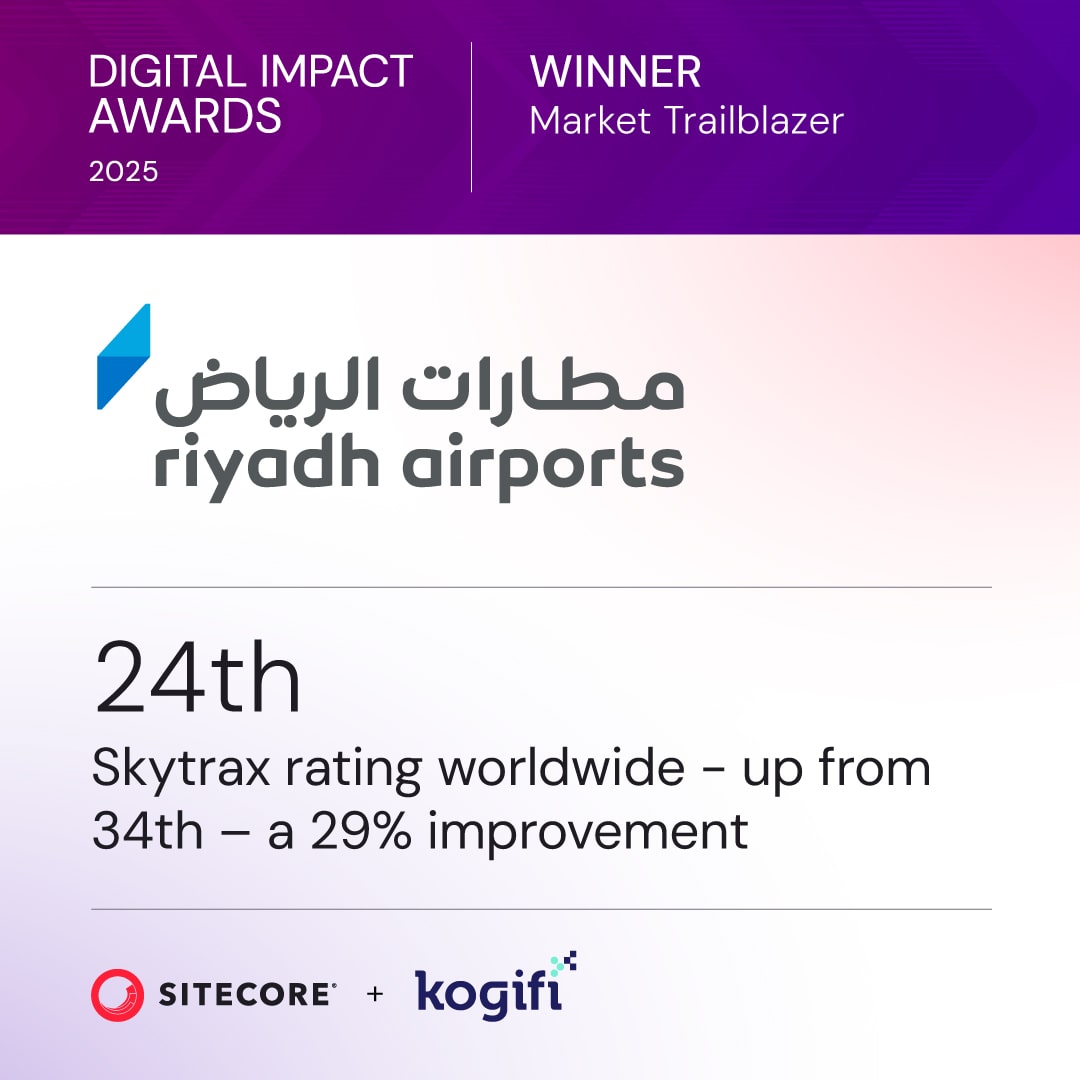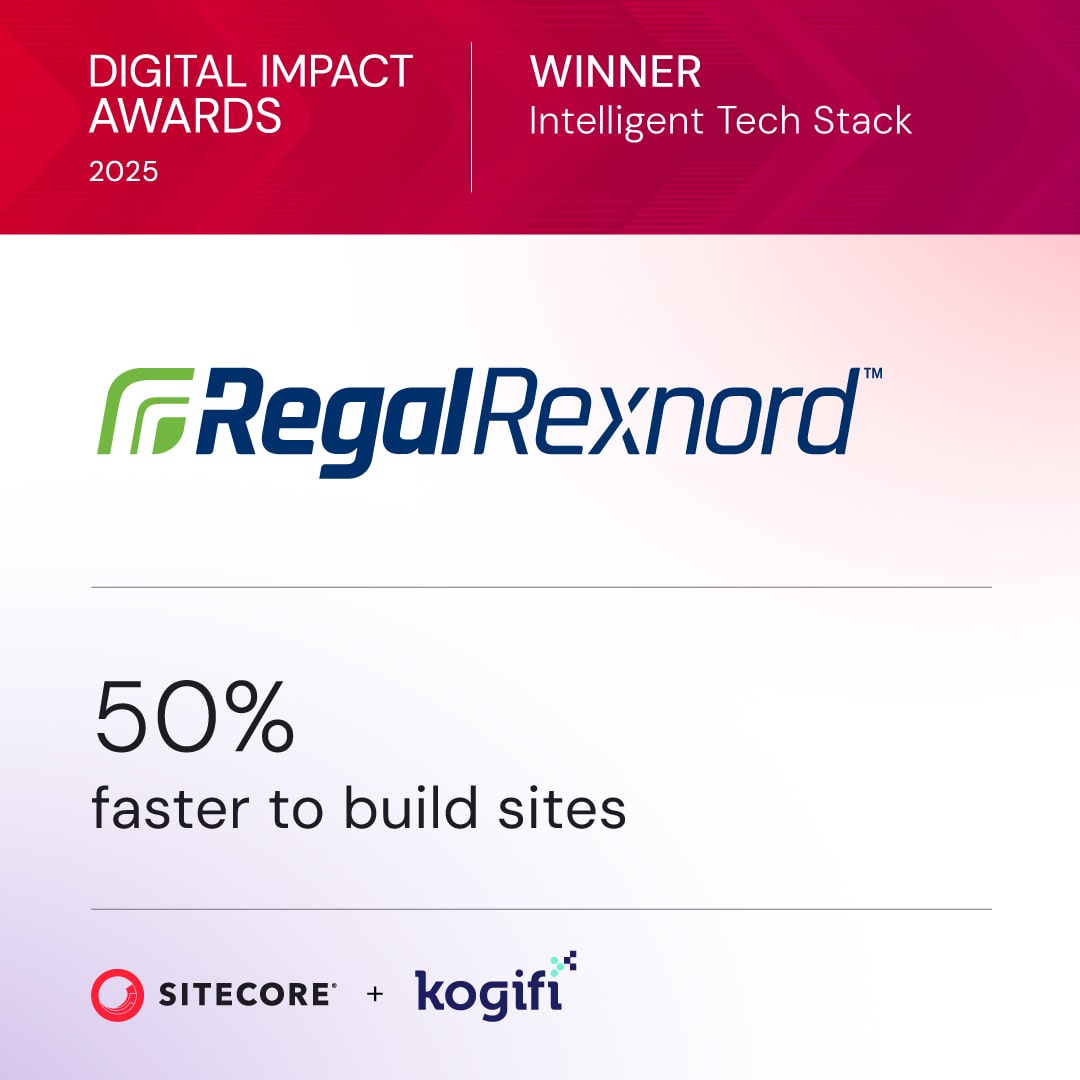Omnichannel marketing is no longer an optional tactic; it's the core of modern customer engagement. Moving beyond siloed channels, a true omnichannel approach involves creating a single, continuous conversation with your audience, regardless of where they interact with your brand. The goal is to make the customer journey seamless and contextually relevant, whether on your website, a mobile app, in-store, or via email.
Achieving this level of cohesion requires a sophisticated technology stack capable of unifying data and delivering personalized experiences at scale. This is where Digital Experience Platforms (DXPs) like Sitecore excel. By integrating a powerful CMS, commerce capabilities, and a robust Customer Data Platform (CDP), Sitecore provides the foundation for executing the advanced omni channel marketing strategies we will explore. For marketing professionals looking to elevate their approach, understanding these frameworks is critical. To fully grasp how to execute a truly cohesive customer experience, exploring a guide on Top Omnichannel Marketing Strategies is invaluable for 2025.
This article moves past the theory and provides a practical roadmap. We will delve into 10 actionable strategies, with a special focus on leveraging the Sitecore ecosystem and complementary platforms like SharePoint to build a truly connected digital presence. You will learn not just what to do, but how to implement these strategies using specific tools and methodologies to drive measurable business results. Each point is designed to provide clear implementation guidance, KPI recommendations, and tactical advice for digital marketing professionals and enterprise teams.
1. Unified Customer Data Platform (CDP)
A foundational element of any successful omnichannel marketing strategy is a Unified Customer Data Platform (CDP). This technology serves as the central nervous system for customer intelligence, ingesting, unifying, and activating data from every touchpoint. It breaks down data silos by creating a persistent, single customer view that tracks interactions from your website, mobile app, in-store point-of-sale systems, email campaigns, and even IoT devices.
With a powerful CDP like Sitecore’s, marketing teams can move beyond fragmented data sets to build a comprehensive 360-degree profile for each customer. This unified view is the key to unlocking true personalization at scale. Instead of targeting based on a single last-click interaction, you can orchestrate experiences informed by a customer's complete history, preferences, and predicted behavior. For example, by connecting online browsing behavior tracked in Sitecore CDP with in-store purchase data, a retailer can deliver hyper-relevant product recommendations and loyalty rewards across all channels.
Implementation and Actionable Insights
To leverage a CDP effectively, start with a comprehensive audit to map your existing data sources and identify gaps. From there, prioritize data governance and quality to ensure the insights you generate are reliable. A platform like Sitecore CDP not only unifies this data but makes it actionable in real-time.
- Actionable Tip: Integrate your CDP with internal collaboration tools like SharePoint. This democratizes customer insights, allowing sales, service, and marketing teams to access the same unified profile, ensuring consistent and informed customer conversations.
- Why It's Essential: Without a CDP, omnichannel efforts are often disjointed. A customer might receive a promotion for a product they just purchased in-store, creating a frustrating experience. A CDP prevents this by ensuring all channels operate from the same real-time data source.
By establishing a CDP as your data backbone, you create the necessary foundation for the sophisticated, consistent, and personalized experiences that modern customers expect. For a deeper look into the architecture of these systems, you can learn more about how 360-degree analytics and customer data platforms work.
2. Seamless Cross-Channel Attribution
True omnichannel marketing strategies require an attribution model that accurately reflects the complexity of the modern customer journey. Seamless Cross-Channel Attribution moves beyond simplistic last-click models to provide a holistic view of how various touchpoints influence conversions. It involves tracking and assigning value to every interaction, from an initial social media ad view to an in-app notification and an eventual in-store purchase, giving marketers a clear picture of what is truly driving results.
To execute this, platforms must track users consistently across devices and channels. Sitecore Experience Platform (XP) is architected to connect user interactions across multiple sessions and devices, building a comprehensive Experience Profile. This allows marketers to move beyond channel-specific analytics and understand the entire path to conversion. This level of insight is crucial for optimizing budgets and tailoring strategies, as it reveals the synergistic effect of different channels working together.
Implementation and Actionable Insights
Implementing effective cross-channel attribution begins with robust tracking and consistent data taxonomy across all platforms. Ensure that UTM parameters, event tracking, and customer IDs are standardized to create a clean data set. Platforms like Sitecore Experience Platform (XP) inherently support this by connecting anonymous and known visitor journeys, laying the groundwork for precise attribution modeling.
- Actionable Tip: Prioritize both macro-conversions (e.g., a final purchase) and micro-conversions (e.g., a newsletter signup or a video view). Tracking these smaller steps within Sitecore XP's goal and event framework provides a richer narrative of the customer journey and helps you assign credit to top-of-funnel and mid-funnel activities that assist in the final conversion.
- Why It's Essential: Without multi-touch attribution, you risk underfunding channels that play a crucial early role in the customer journey. For example, a blog post may not be the final click before a sale, but it could be the essential first touch that introduces a customer to your brand, making it a vital component of your strategy.
By adopting a more nuanced attribution framework, you can make smarter, data-informed decisions that enhance your marketing effectiveness. For a deeper understanding of how to unify the data required for this, you can explore the principles behind effective customer data integration solutions.
3. Personalized Email Marketing Integration
Email marketing transforms from a broadcast tool into a precision instrument within a cohesive omni channel marketing strategy. Instead of sending generic newsletters, this approach connects email campaigns with real-time data from all customer touchpoints, such as website browsing, mobile app usage, and in-store purchases. This integration allows for the delivery of highly targeted, behavior-driven emails that feel uniquely relevant to each recipient, solidifying its position as a high-ROI channel.
This strategy hinges on using a customer's holistic journey to inform communication. For instance, when a customer views specific products on your website, a system like Sitecore Send can automatically trigger a follow-up email showcasing those very items. Similarly, a user abandoning a cart can receive a personalized recovery sequence that addresses their specific hesitation, a powerful tactic for boosting conversions. The goal is to make every email a direct, logical continuation of the customer's last interaction, regardless of the channel.

Implementation and Actionable Insights
To effectively implement personalized email, connect your email service platform (ESP) directly with your central data repository, like a Sitecore CDP. This allows behavioral triggers and customer segments to flow seamlessly into your campaign logic. Begin by mapping key customer actions that should trigger an email, such as first-time purchase, prolonged inactivity, or viewing a high-value product page.
- Actionable Tip: Use dynamic content blocks within your email templates. A platform like Sitecore allows you to create a single email design where specific sections, like product recommendations or promotional banners, change automatically based on the recipient's segment, past purchases, or loyalty status.
- Why It's Essential: Generic email blasts are easily ignored and can lead to high unsubscribe rates. Personalized, triggered emails meet customers where they are in their journey, providing value at the right moment. This relevance dramatically increases open rates, click-through rates, and ultimately, conversions, making it a critical component of modern engagement.
By treating email as an integrated dialogue rather than a one-way message, you strengthen customer relationships and drive measurable results. To master the nuances of this approach, you can learn more about how to create an A/B testing email campaign in Sitecore Send.
4. Integrated Social Media and Commerce Strategy
An integrated social media and commerce strategy transforms passive scrolling into active shopping by embedding transactional capabilities directly within social platforms. This approach bridges the gap between discovery and purchase, allowing customers to buy products from shoppable posts, social storefronts, and live events without ever leaving their favorite app. It effectively turns social channels into a powerful, frictionless extension of your digital storefront.
This strategy capitalizes on the "in-the-moment" nature of social media. By leveraging headless commerce platforms like Sitecore OrderCloud, brands can seamlessly extend their product catalogs and checkout processes into social channels. For example, a brand can use a social media live event to showcase a new collection, allowing viewers to purchase items directly from the video stream, combining entertainment with immediate e-commerce functionality powered by a robust, API-first backend. This is a core component of modern omni channel marketing strategies, as it meets customers where they are most engaged.

Implementation and Actionable Insights
To effectively implement social commerce, ensure your product catalog is synchronized and optimized for social platforms. A platform like Sitecore OrderCloud provides the headless, API-first architecture needed to manage complex product catalogs and order fulfillment processes across these new sales channels. This ensures inventory and pricing are consistent, whether a customer is on your website or a social shop.
- Actionable Tip: Use Sitecore's personalization engine to power dynamic ads on social media that showcase products based on a user's cross-channel browsing history. If a user viewed a specific handbag on your website, a targeted Instagram Story ad can feature that same item with a direct "Shop Now" link.
- Why It's Essential: Without this integration, the journey from social discovery to purchase is fragmented, leading to high cart abandonment rates. A customer might see a product on Instagram, navigate to your website, and then abandon the purchase. Integrated social commerce eliminates these extra steps, significantly boosting conversion rates by capturing impulse buys.
By weaving commerce into the social fabric, you create a more engaging and convenient shopping experience. This deepens customer relationships and opens up a significant revenue stream. To better understand how to manage this complex ecosystem, you can learn more about the synergy between a modern CMS and e-commerce platforms.
5. Mobile-First Omnichannel Experience
Adopting a mobile-first mindset is no longer optional; it's a core requirement for effective omni channel marketing strategies. This approach involves designing the entire customer journey with the mobile device as the primary interface, acknowledging that the majority of digital interactions now originate on smartphones. It extends beyond responsive web design to encompass dedicated mobile apps, SMS/MMS messaging, and integrated mobile payment systems, all working in concert to create a frictionless experience that can be started on mobile and continued elsewhere without disruption.

With a platform like Sitecore Experience Commerce (XC), businesses can deliver these sophisticated mobile experiences. For instance, a retailer's app can masterfully integrate in-store and online shopping by allowing users to create shopping lists, locate items in a specific store, and use mobile pay at checkout. This creates a cohesive journey where the mobile app is not just an e-commerce channel but a vital in-store companion, all powered by a unified commerce engine. This synergy is central to building brand loyalty and increasing customer lifetime value.
Implementation and Actionable Insights
To successfully implement a mobile-first strategy, your focus must be on speed, convenience, and context. Mobile users expect immediate value and intuitive interfaces. Leveraging your DXP's capabilities, you can build headless architectures that feed content and data to lightweight, high-performance Progressive Web Apps (PWAs) or native applications, ensuring optimal performance on any device.
- Actionable Tip: Use location services and beacons to trigger contextual push notifications through Sitecore's marketing automation tools. A customer entering a geofenced area near your store could receive a personalized offer on their mobile device for an item they previously viewed online, directly linking digital browsing to physical foot traffic.
- Why It's Essential: A poor mobile experience is a major point of friction that can derail the entire customer journey. If your website is slow to load or your app is difficult to navigate, customers will abandon it for a competitor. A mobile-first approach ensures the primary touchpoint for most users is optimized, setting a positive tone for all subsequent interactions across channels.
By prioritizing mobile, you are aligning your marketing efforts with modern consumer behavior. This focus not only improves engagement but also unlocks new opportunities for personalization and convenience that are unique to the mobile platform.
6. Retail Analytics and In-Store Technology Integration
Bridging the gap between digital engagement and physical retail is a critical pillar of modern omni channel marketing strategies. Integrating in-store technologies like beacons, smart cameras, and Wi-Fi analytics with your online data creates a holistic view of the customer journey. This fusion of physical and digital insights allows businesses to understand how online behavior translates into in-store actions and vice versa, moving beyond siloed channel performance metrics.
Leading retailers use this integrated data to transform the in-store experience into a data-rich environment. For example, a retailer can use in-store sensors to trigger a personalized offer via a mobile app—powered by Sitecore—for a product the customer is currently viewing. This data can also be fed back into Sitecore CDP to enrich the customer's profile, noting their physical store visit and product interests, which can then inform future digital marketing efforts. This level of integration ensures the customer experience is seamless, whether they are browsing online or walking through an aisle.
Implementation and Actionable Insights
To effectively merge physical and digital analytics, begin by identifying key in-store behaviors you want to measure, such as dwell time, path-to-purchase, and product interaction. Technologies can then be deployed to capture this data. It is crucial to ensure this data feeds back into your central customer profile within Sitecore CDP, enriching it with real-world context.
- Actionable Tip: Connect your in-store analytics with your loyalty program data within your CDP. This allows you to attribute in-store visits and purchases to specific customer profiles, enabling you to measure the direct impact of online campaigns on physical sales and tailor follow-up communications.
- Why It's Essential: Without this integration, the physical store remains a black box. You lose the ability to understand why a customer who abandoned an online cart later purchased in-store, or how an in-app promotion influenced their path through a physical location. Closing this loop is fundamental to true omnichannel measurement and personalization.
By leveraging in-store technology, you can unlock granular insights into customer behavior that are impossible to gather from digital channels alone. This comprehensive understanding allows for smarter inventory management, optimized store layouts, and highly relevant, context-aware customer interactions.
7. Content Marketing Across Multiple Formats and Channels
A truly effective omnichannel marketing strategy relies on delivering valuable, consistent content across every channel where your audience is active. This goes beyond a simple blog; it involves creating an interconnected ecosystem of content in multiple formats, from videos and podcasts to interactive webinars and in-depth whitepapers. This approach ensures your brand remains a consistent and authoritative voice, engaging customers at every stage of their journey, regardless of the platform they choose.
By distributing tailored content, you build brand authority and maintain a continuous conversation with your audience. A user might discover a quick tutorial on a social channel, which leads them to a detailed webinar on your website, and then prompts them to download a comprehensive guide, all seamlessly connected. This content-led journey nurtures prospects and reinforces brand loyalty. A robust Digital Experience Platform (DXP) like Sitecore is central to managing and personalizing this content delivery at scale across diverse digital properties.
Implementation and Actionable Insights
To implement this strategy, start by creating a comprehensive content calendar that maps themes to different formats and distribution channels. The goal is to create a core piece of content and then strategically repurpose it. A detailed research report, for instance, can be atomized into a series of blog posts, an infographic, a webinar, and social media soundbites, maximizing its reach and impact.
- Actionable Tip: Use Sitecore's content management capabilities to create a central repository of content assets. Tag assets by topic, format, and target persona to enable dynamic personalization, ensuring the right content format is delivered on the right channel at the optimal time for each user.
- Why It's Essential: Without a multi-format content strategy, your omnichannel presence becomes repetitive and one-dimensional. Customers who prefer video will ignore your text-based emails, and those seeking deep insights will overlook your social media posts. Offering diverse formats caters to varied consumption habits and captures a wider audience, making your marketing far more effective.
By building a cohesive content ecosystem, you ensure your brand's narrative is consistent and engaging, creating a powerful engine for customer acquisition and retention within your omnichannel framework. To see how content personalization powers modern digital experiences, explore the capabilities of a leading DXP like Sitecore Experience Platform.
8. Programmatic Advertising Across Channels
Programmatic advertising serves as a high-speed engine for omnichannel marketing strategies, using automated, data-driven bidding to place ads across a vast digital landscape. This approach leverages AI and real-time data to target specific audience segments with hyper-relevant messages on display, social, video, and native channels. It ensures your advertising spend is allocated efficiently, reaching the right user at the optimal moment in their journey, regardless of the device or platform they are using.
With a sophisticated programmatic strategy, marketers can unify their paid media efforts to tell a cohesive brand story. Instead of managing separate siloed campaigns, programmatic platforms allow for centralized buying and optimization. For example, a brand can serve an initial awareness video ad to a broad audience on a streaming service, then automatically retarget engaged viewers with a product-specific display ad on a news site, creating a seamless and logical ad sequence that boosts conversion rates. This is all powered by unified audience data from a platform like Sitecore CDP.
Implementation and Actionable Insights
To effectively integrate programmatic into your omnichannel plan, you must connect it to a central data source. By feeding first-party data from a CDP like Sitecore’s into your demand-side platform (DSP), you can move beyond cookie-based targeting to build highly precise and resilient audience segments. This enables you to target existing customers with upsell campaigns or build lookalike audiences based on your most valuable customer profiles.
- Actionable Tip: Utilize your CDP to create dynamic suppression lists for your programmatic campaigns. If a customer makes a purchase in-store or online, this data should immediately update your DSP to remove them from campaigns advertising that same product, preventing wasted ad spend and poor customer experiences.
- Why It's Essential: Without a unified approach, programmatic advertising can become another silo. A customer might see ads for a product they just researched on your app, but those ads won't reflect their recent in-store visit or conversation with customer service. Integrating programmatic buying with your central customer data ensures your paid media is a true extension of your omnichannel experience.
By automating your media buying based on unified customer intelligence, you can scale your personalization efforts far beyond manual campaign management. This makes programmatic a critical component for delivering consistent and relevant messaging across the entire digital ecosystem.
9. Customer Service and Chatbot Integration
An often-overlooked yet critical component of omni channel marketing strategies is the seamless integration of customer service channels. This involves deploying AI-powered chatbots and unified service platforms to deliver consistent, context-aware support across every touchpoint, from web chat and social media to SMS and in-app messaging. It ensures that a customer's conversation history is preserved, allowing them to switch channels without repeating themselves.
This unified approach transforms customer service from a reactive cost center into a proactive, value-adding part of the marketing ecosystem. By integrating service platforms with a central customer data profile, interactions become highly personalized. An AI assistant, for example, can use customer history data from Sitecore CDP to provide tailored support and product recommendations, turning a simple service query into a meaningful, personalized engagement. This level of consistency and intelligence is key to building long-term loyalty.
Implementation and Actionable Insights
To effectively integrate customer service, begin by mapping common customer inquiry paths and identifying high-volume, repetitive questions that are ideal for chatbot automation. Ensure a clear and frictionless escalation path from the chatbot to a human agent is always available. A platform like Sitecore's OrderCloud can integrate with service tools to give agents and chatbots real-time access to order history, empowering them to resolve issues faster.
- Actionable Tip: Connect your customer service platform to your SharePoint-based internal knowledge base. This allows both AI chatbots and human agents to pull from the same source of truth for answers, ensuring consistency and accuracy in all customer responses.
- Why It's Essential: A fragmented service experience is a major source of customer frustration. When a customer has to re-explain their issue every time they switch from a chatbot to an email support ticket, it erodes trust. Integrated service ensures every agent has the full context, creating a smooth and supportive journey.
By unifying customer service, you reinforce the promise of a true omnichannel experience, demonstrating that you value the customer's time and history regardless of how they choose to connect. For those exploring AI-driven service, understanding the foundations of large language models is a valuable first step.
10. Loyalty Program Data Integration and Personalization
A powerful loyalty program is more than just a reward system; it is a critical component of modern omni channel marketing strategies that transforms customer engagement into a valuable data asset. By integrating loyalty data across all channels, from in-store purchases to mobile app activity, businesses can create a unified view of their most valuable customers. This integration allows for the delivery of truly personalized rewards, experiences, and communications that recognize and reinforce customer devotion.
Modern loyalty programs serve as a core engine for personalization, connecting behavior that would otherwise remain siloed. For instance, a rewards program can link in-app ordering, in-store payments, and promotional engagement to offer customized challenges and rewards. This data, when centralized in a platform like Sitecore CDP, can power personalization across all touchpoints, from the website homepage to targeted emails. This approach turns transactional relationships into emotional connections, fostering long-term advocacy.
Implementation and Actionable Insights
To effectively implement an integrated loyalty program, businesses must ensure it is frictionless for the customer and deeply connected to their data infrastructure. A platform like Sitecore Personalize can leverage loyalty data in real-time to tailor web content, offers, and product recommendations based on a member's tier, purchase history, and engagement level.
- Actionable Tip: Use your loyalty program data to create tiered experiences. For example, integrate your loyalty status data with SharePoint to empower your in-store associates or customer service teams with a customer's VIP status, enabling them to provide elevated service and exclusive, unprompted perks.
- Why It's Essential: Without integration, loyalty programs operate in a vacuum. A customer's high-value status might be recognized on your app but ignored in-store, creating a jarring and inconsistent brand perception. An integrated approach ensures that a customer's loyalty is consistently acknowledged and rewarded, no matter how they choose to interact with your brand.
By weaving loyalty program data into the fabric of your omnichannel strategy, you create a powerful feedback loop that drives repeat business, gathers crucial first-party data, and delivers the hyper-personalized experiences that build lasting brand affinity.
10-Point Omnichannel Strategy Comparison
Your Next Step: Building a Cohesive Omnichannel Future
We've explored ten powerful omni channel marketing strategies, from establishing a Unified Customer Data Platform (CDP) to integrating loyalty program data for deep personalization. Each strategy represents a critical component of a modern, customer-centric marketing ecosystem. The journey from a siloed, multichannel approach to a truly unified omnichannel experience is not merely a tactical shift; it is a fundamental transformation of how your organization views, understands, and interacts with its audience.
The common thread weaving through every strategy is the undeniable need for a single, cohesive view of the customer. Without this foundation, efforts to personalize, attribute success, or create seamless transitions between channels will fall short. True omnichannel execution is less about launching individual campaigns on different platforms and more about building an intelligent, interconnected system where data, content, and commerce converge to serve the customer at every turn.
Key Takeaways for Your Omnichannel Journey
As you move forward, focus on these core principles derived from the strategies discussed:
- Data is Your Foundation: The success of every omnichannel initiative, from personalized emails to integrated in-store analytics, hinges on clean, unified, and accessible customer data. Prioritizing a robust CDP, like Sitecore CDP, isn't just a technical upgrade; it's a strategic imperative.
- Technology is the Enabler: Platforms are the engines that drive omnichannel experiences. A sophisticated Digital Experience Platform (DXP) like Sitecore Experience Platform (XP) provides the necessary tools for content management, personalization, and commerce integration. Simultaneously, collaborative platforms like SharePoint are essential for aligning internal teams, ensuring that marketing, sales, and service departments are working from a single source of truth.
- Customer-Centricity is the Goal: Every strategy, from chatbot integration to mobile-first design, must be implemented with the end-user's experience in mind. The ultimate goal is to erase the friction between channels, making it feel like one continuous conversation with your brand, regardless of how or where the customer chooses to engage.
Your Actionable Path Forward
Implementing these omni channel marketing strategies can seem daunting, but progress can be made through a phased, strategic approach. Begin by auditing your current technology stack and data architecture. Identify the biggest gaps in your customer's journey and prioritize the strategies that will deliver the most significant impact first.
For many enterprises, this journey requires more than just the right software; it demands deep technical expertise and a strategic partner who understands the intricate connections between platform capabilities and business objectives. The complexities of integrating Sitecore's product portfolio, aligning it with internal workflows in SharePoint, and architecting a scalable data solution are significant. This is where specialized expertise becomes invaluable, transforming ambitious plans into tangible results.
The transition to omnichannel is a marathon, not a sprint. It requires commitment, strategic investment, and a cultural shift toward collaboration. By focusing on building a unified ecosystem of data, content, and technology, you are not just optimizing marketing campaigns; you are building lasting customer relationships, fostering loyalty, and future-proofing your business in an increasingly connected world.
Ready to transform your vision for omni channel marketing strategies into a powerful reality? Kogifi specializes in architecting and implementing sophisticated digital ecosystems powered by Sitecore and integrated with SharePoint. Let our team of experts help you build the seamless, personalized customer journeys that drive growth by visiting Kogifi to start the conversation.








































